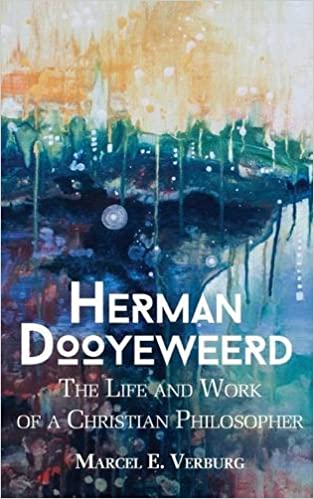I have recently completed a reading of Marcel E Verburg’s massive book, Herman Dooyeweerd: The Life and Work of a Christian Philosopher (Paideia Press, 2015). For those unfamiliar with him, Dooyeweerd (1894-1977) taught jurisprudence for decades at the Free University of Amsterdam, a Christian university established by Abraham Kuyper in 1880. As an undergraduate, I came into contact with his unique philosophical school, known in Dutch as De Wijsbegeerte der Wetsidee and in English as the Philosophy of the Law-Idea. Eventually I would write a dissertation at the University of Notre Dame on Dooyeweerd’s political thought, comparing it with that of neo-Thomist philosopher Yves René Simon (1903-1961).
Dooyeweerd was an intellectual heir of Kuyper who grew up and lived his life within the Gereformeerde Kerken in Nederland (Reformed Churches in the Netherlands) and the network of institutions established by the members of that church body, including the Anti-Revolutionary Party, which participated in coalition governments in the Netherlands until just over four decades ago when it merged with two other Christian parties to form the Christian Democratic Appeal.
Dooyeweerd’s achievement was to articulate a comprehensive philosophy rooted in a Christian worldview capable of engaging in dialogue with other philosophical schools rather than isolating itself within the cosy confines of his own Gereformeerd community. This he did by means of a transcendental critique of theoretical thought, which aims at self-knowledge by inviting the theoretician to examine the religious roots of his or her own philosophy. The fundamental error of the major streams of philosophy, Dooyeweerd believed, lies in embracing the “pretended autonomy of theoretical thought,” that is, in the claim that its basis lies within theory itself and not within a fundamental religious ground-motive rooted in the human heart. As Dooyeweerd put it,
any method is uncritical if it does not give account of the necessary presuppositions of the theoretical attitude of thought and mistakes [one’s own] faith presuppositions for scientific judgments which are then maintained as theoretical axioms (383).
Dooyeweerd’s critique was not meant only for his philosophical rivals but was as much a challenge to himself to admit and lay bare the religious origins of his own systematic thought. Only if everyone does this can the various philosophical schools communicate on a level playing field.
My own approach to political ideologies, as set forth in Political Visions and Illusions, owes a considerable debt to Dooyeweerd’s project. I am firmly persuaded that we cannot fully understand liberalism, conservatism, nationalism, &c., without recognizing that they are rooted in nonfalsifiable presuppositions of a basic religious character. Dooyeweerd had an impact as well on my second book, We Answer to Another, in which I have explored the concept of authority and its relationship to the image of God spoken of in Scripture.
As for Verburg’s book, it is less a biography than a systematic effort to trace the development of Dooyeweerd’s thought throughout the course of his adult life. I would recommend it to anyone interested in Dooyeweerd’s philosophy, which can be daunting to the novice but richly repays deep and careful study. However, I suspect that most prospective readers would like to know more about Dooyeweerd as a person than Verburg gives us here. To be sure, he tells us about Dooyeweerd’s marriage, the birth of his children, and the death of his wife, but I for one would like to know more. Did he have a healthy family life? Did he ever write love letters to Jantiena Fernhout before he married her? How did he respond personally to the traumatic events of the first half of the 20th century through which he lived? What was his source of income during the war years when the Free University was closed?
One paragraph in particular caught my eye:
During the war, the Dooyeweerd home on the Oranje Nassaulaan also provided refuge to a Jewish woman and her daughter who in this manner managed to evade the Nazis. The attic of nr. 13, Oranje Nassaulaan also served for a time as a hideout for three young men to avoid being sent to Germany for forced labor (p. 333).
I think most readers would like to have known more about these episodes in Dooyeweerd’s life. Verburg drops tantalizing anecdotes here and there, but these get swallowed up in his focus on the philosophy. As indicated above, I am pleased to recommend this book. Nevertheless, I would love to see someone write a biography of Dooyweerd along the lines of Jim Bratt’s magisterial biography of Abraham Kuyper. I think the time is right for such a project.

















